This large wild lace monitor was presented to Nepean Animal Hospital after hours during our Western Sydney Veterinary Emergency Service by a WIRES carer after being rescued from a multiple dog attack.
The monitor was promptly and carefully assessed by our emergency Vet, Dr. Alexandra Swan. Dr. Alexandra has a passion for reptiles and has experience with handling and treating various reptilian wounds and trauma.
The monitor had multiple punctures and lacerations over his entire body and seemed quite distressed, yet dull for a wild monitor.
It’s important to remember these lizards can be very large and are very dangerous. They have sharp claws and teeth as well as impressive muscular strength and should only be approached by experienced handlers. Along with the severe physical damage they can inflict, they also possess a venom. Previously thought to be the bacteria in their saliva which is responsible for the tissue damage, it has since been found that Australian monitor lizards possess a distinct venom gland capable of producing a mild venom. The venom is different to snake venom mostly causing local tissue reaction at the bite site with systemic effects in humans being rare.
Keeping this in mind, the monitor was carefully restrained while Dr. Alexandra Swan provided strong pain relief and sedation. Once sedated, an induction anaesthetic was administered into the tail vein to and an endotracheal tube was placed into his airway to keep him anaesthatised whilst we took X-rays and assessed the extent of his injuries. Upon x-ray we noted there were two rib fractures, of which one had allowed the lung to herniate under the skin. The X-rays also showed that this monitor was a male, evidenced by the pair of white bony reproductive organs at the base of his tail!
When reptiles are anaesthatised they cannot breathe for themselves, so he was being ventilated during the entire procedure. When a breath was provided the space over the broken rib would visibly enlarge under the skin indicating that he would require surgical repair of the defect.
The monitor was then prepared for surgery to put his lung back into the chest and close the hole between the ribs. The muscle layers were closed and the broken rib was aligned. The skin was closed with intradermal (buried) sutures which provide excellent strength and as they are absorbable, he can be released sooner than having to wait for the sutures to be removed. Typically reptiles need their skin sutures to stay in for 4-6 weeks. The other puncture wounds were superficial and only required external sutures after a thorough clean.
He had an excellent recovery and was acting like a typical wild monitor within hours. He is currently in care with an experienced WIRES carer receiving antibiotics and pain relief while his wounds heal and will be released as soon as possible.
If you see injured wildlife such as this, please contact a wildlife organisation like WIRES or a snake catcher such as Australian Snake Catchers to arrange for it to be taken to a vet. WellPet Vets Nepean Animal Hospital is staffed 24 hours and can assist carers with wildlife at any time. Our address is 50 Mulgoa Rd, Regentville. Ph 1300

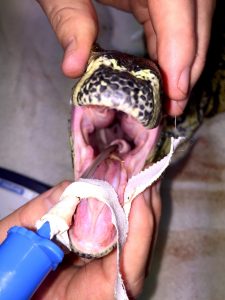
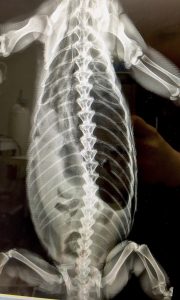
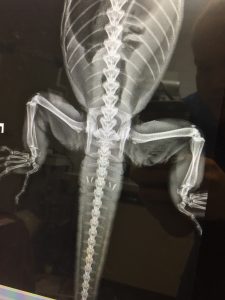
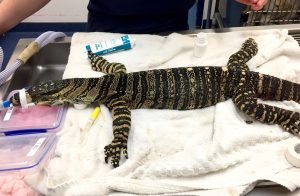
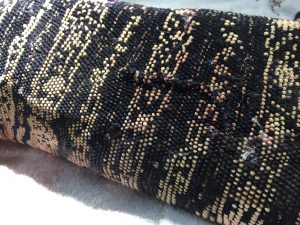
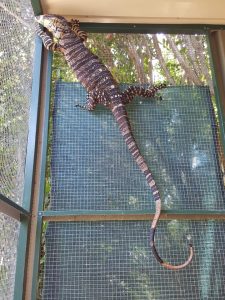
Add Your Comment